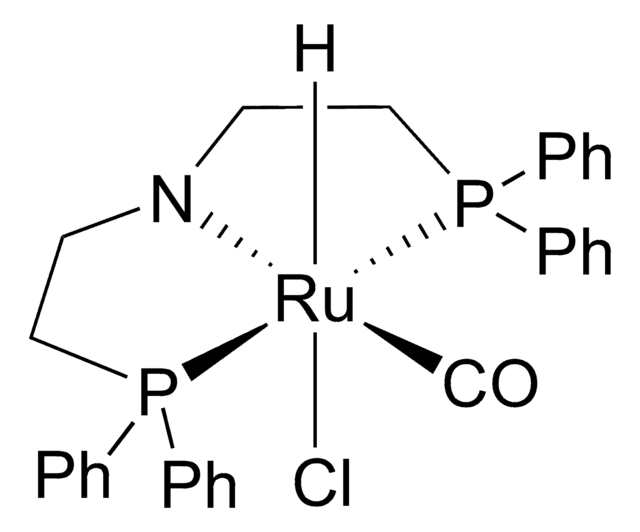Kluczowe dokumenty
701920
2-((Di-tert-butylphosphinomethyl)-6-diethylaminomethyl)pyridine
Synonim(y):
PNN
Wybierz wielkość
1390,00 zł
Wybierz wielkość
About This Item
1390,00 zł
Polecane produkty
Formularz
liquid
przydatność reakcji
reaction type: Buchwald-Hartwig Cross Coupling Reaction
reaction type: Heck Reaction
reaction type: Hiyama Coupling
reaction type: Negishi Coupling
reaction type: Sonogashira Coupling
reaction type: Stille Coupling
reaction type: Suzuki-Miyaura Coupling
reagent type: ligand
współczynnik refrakcji
n20/D 1.519
gęstość
0.936 g/mL at 25 °C
grupa funkcyjna
phosphine
ciąg SMILES
CCN(CC)Cc1cccc(CP(C(C)(C)C)C(C)(C)C)n1
InChI
1S/C19H35N2P/c1-9-21(10-2)14-16-12-11-13-17(20-16)15-22(18(3,4)5)19(6,7)8/h11-13H,9-10,14-15H2,1-8H3
Klucz InChI
MTBWGMDPQBSPGF-UHFFFAOYSA-N
Powiązane kategorie
Hasło ostrzegawcze
Warning
Zwroty wskazujące rodzaj zagrożenia
Zwroty wskazujące środki ostrożności
Klasyfikacja zagrożeń
Aquatic Chronic 4 - Eye Irrit. 2 - Skin Irrit. 2 - STOT SE 3 - Water-react 3
Organy docelowe
Respiratory system
Kod klasy składowania
4.3 - Hazardous materials which set free flammable gases upon contact with water
Klasa zagrożenia wodnego (WGK)
WGK 3
Temperatura zapłonu (°F)
154.0 °F
Temperatura zapłonu (°C)
67.8 °C
Środki ochrony indywidualnej
Eyeshields, Faceshields, Gloves, type ABEK (EN14387) respirator filter
Wybierz jedną z najnowszych wersji:
Certyfikaty analizy (CoA)
Nie widzisz odpowiedniej wersji?
Jeśli potrzebujesz konkretnej wersji, możesz wyszukać konkretny certyfikat według numeru partii lub serii.
Masz już ten produkt?
Dokumenty związane z niedawno zakupionymi produktami zostały zamieszczone w Bibliotece dokumentów.
Active Filters
Nasz zespół naukowców ma doświadczenie we wszystkich obszarach badań, w tym w naukach przyrodniczych, materiałoznawstwie, syntezie chemicznej, chromatografii, analityce i wielu innych dziedzinach.
Skontaktuj się z zespołem ds. pomocy technicznej










